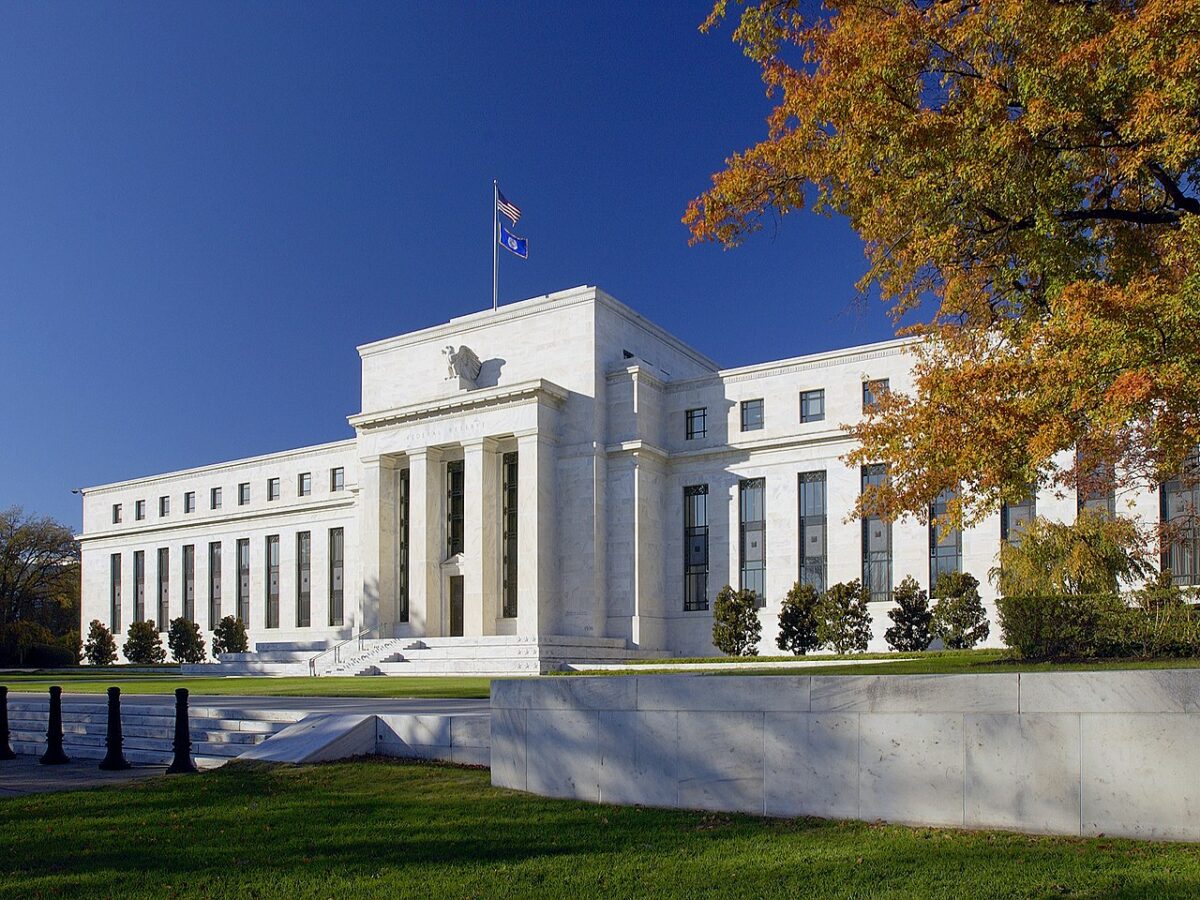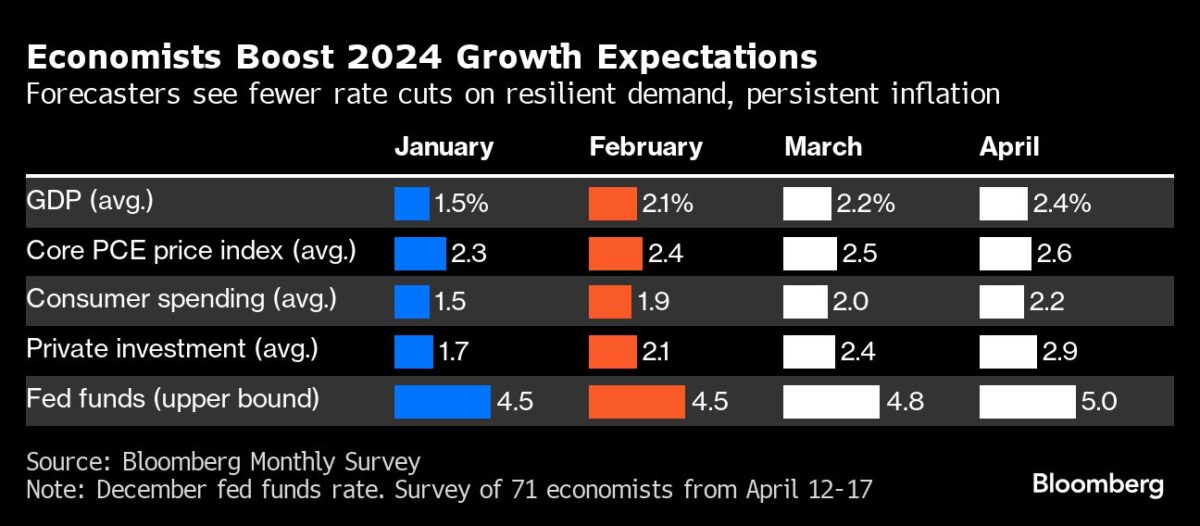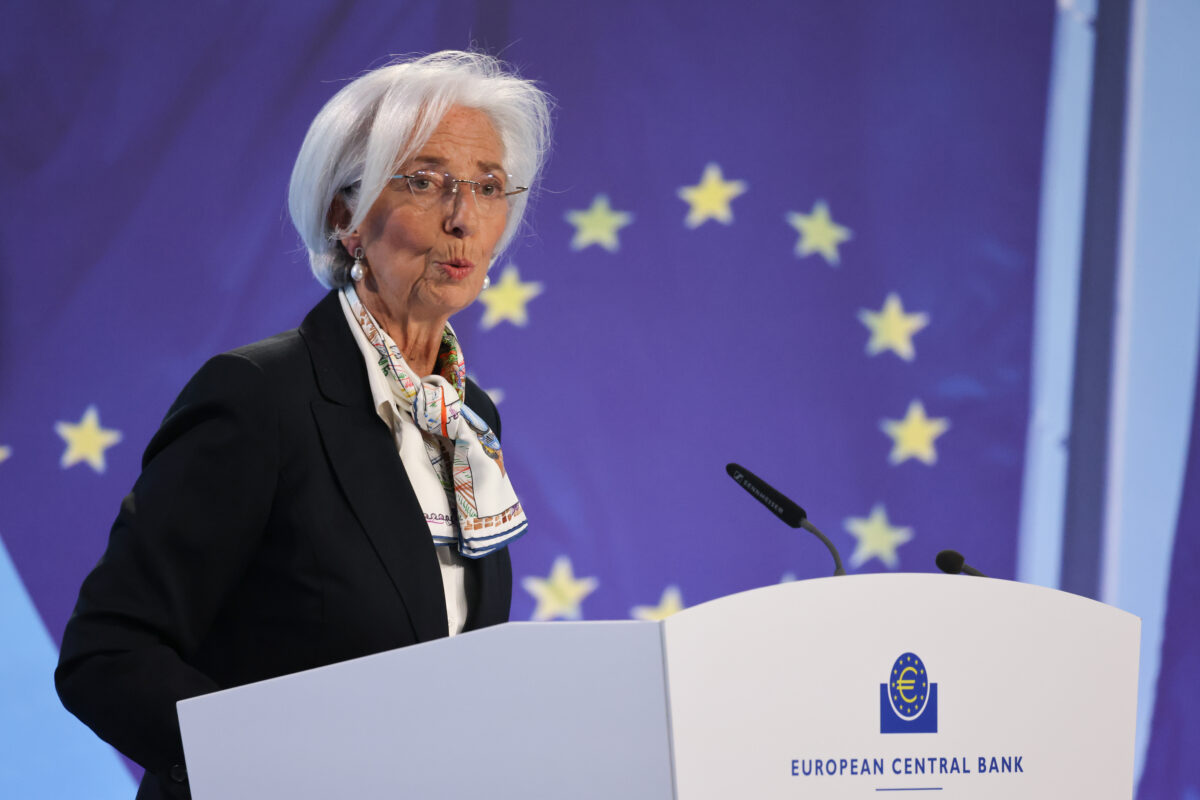Hier die wichtigsten Aussagen der Fed in ihrem FOMC-Statement in Schlagzeilen – vor allem die Themen Zinsanhebungen und Bilanzreduzierung sind natürlich im Fokus der Märkte:
– bald angemessen, die Zinsen anzuheben
– Anfang März werden Wertpapierkäufe beendet
– werden geldpolitischen Anpassungen vornehmen, wenn falls Risiken auftauchen, die Ziele der Fed verhindern (FMW: dovish)
– Fed veröffentlicht ein Statement zur Bilanzreduzierung:
„The Committee expects that reducing the size of the Federal Reserve’s balance sheet will commence after the process of increasing the target range for the federal funds rate has begun.“
Und: die Fed wird auslaufende Anleihen nicht verlängern, aber nicht aktiv Staatsanleihen verkaufen:
„The Committee intends to reduce the securities holdings over time in a predictable manner primarily by adjusting the amounts reinvested of principal payments“
FMW: keine Erwähnung, das QE vorzeitig zu beenden oder einen 0,5%-Zinsschritt zu machen oder die Zinsen vorzeitig anzuheben, daher die US-Futures höher; die Rendite der 10-jährigen US-Aneleihe aber steigt auf 1,80%
– Inflation: aus „with inflation having exceeded 2 percent for some time…“ wird im aktuellen Statement „with inflation well above 2 percent and a strong labor market…“
FMW: die Fed macht klar, dass sie die Zinsen anheben wird, aber nennt keinen genauen Zeitplan. Sie kündogt die Bilanzreduzierung an, nennt aber ebenfallls keinen Fahrplan. Klar ist nur, dass das Tapering im März abgeschlossen sein wird!
FOMC redline pic.twitter.com/7bEItNxjTP
— zerohedge (@zerohedge) January 26, 2022
Das FOMC-Statement im Wortlaut:
Indicators of economic activity and employment have continued to strengthen. The sectors most adversely affected by the pandemic have improved in recent months but are being affected by the recent sharp rise in COVID-19 cases. Job gains have been solid in recent months, and the unemployment rate has declined substantially. Supply and demand imbalances related to the pandemic and the reopening of the economy have continued to contribute to elevated levels of inflation. Overall financial conditions remain accommodative, in part reflecting policy measures to support the economy and the flow of credit to U.S. households and businesses.
The path of the economy continues to depend on the course of the virus. Progress on vaccinations and an easing of supply constraints are expected to support continued gains in economic activity and employment as well as a reduction in inflation. Risks to the economic outlook remain, including from new variants of the virus.
The Committee seeks to achieve maximum employment and inflation at the rate of 2 percent over the longer run. In support of these goals, the Committee decided to keep the target range for the federal funds rate at 0 to 1/4 percent. With inflation well above 2 percent and a strong labor market, the Committee expects it will soon be appropriate to raise the target range for the federal funds rate. The Committee decided to continue to reduce the monthly pace of its net asset purchases, bringing them to an end in early March. Beginning in February, the Committee will increase its holdings of Treasury securities by at least $20 billion per month and of agency mortgage‑backed securities by at least $10 billion per month. The Federal Reserve’s ongoing purchases and holdings of securities will continue to foster smooth market functioning and accommodative financial conditions, thereby supporting the flow of credit to households and businesses.
In assessing the appropriate stance of monetary policy, the Committee will continue to monitor the implications of incoming information for the economic outlook. The Committee would be prepared to adjust the stance of monetary policy as appropriate if risks emerge that could impede the attainment of the Committee’s goals. The Committee’s assessments will take into account a wide range of information, including readings on public health, labor market conditions, inflation pressures and inflation expectations, and financial and international developments.
Voting for the monetary policy action were Jerome H. Powell, Chair; John C. Williams, Vice Chair; Michelle W. Bowman; Lael Brainard; James Bullard; Esther L. George; Patrick Harker; Loretta J. Mester; and Christopher J. Waller. Patrick Harker voted as an alternate member at this meeting.
Kommentare lesen und schreiben, hier klicken














Jerome ist schon ein ziemlicher Assiname : )
Da sitzt man gebannt vor den Livecharts von Gold und dem S&P500 und was passiert in den ersten 30 Minuten nach der Bekanntgabe? N I C H T S
Ok, Im Gold prügeln sich Bullen und Bären die Nase blutig, es bleibt beim Seitwärts unter hohem Volumen. Die Bären verteidigen mit Zähnen und Klauen die 200-Stunden-Linie, aber unterm Strich bleibt die Kursbewegung, obwohl hochvolatil, ein Fliegenschiss. Beim S&P500 hört man das Gähnen der Börsenhändler von der Wall Street bis ins Ruhrgebiet. Toll, die kurzzeitig verlorene 4400-Marke wieder zurück erobert, aber in einer korrektiven Bewegung mit „viel shaky oder wackeligen Überschneidungen“ (mit hoffentlich freundlicher Genehmigung Copyright Rüdiger Born).
Ich hab jetzt genug, der Späthandel kann mich mal. 30% Cashquote wollen endlich reinvestiert werden, vielleicht findet sich irgendwo noch ein billiger MSCI World ETF, der schreit nicht so nach Aufmerksamkeit wie die US-Märkte. Wobei… oh scheisse, MSCI World = 60% US-Aktien? Fuck….
Wir werden die Zinsen anheben wenn wir sie anheben um sie anzuheben aber solange wir sie nicht anheben weil die Zisen Zinsen und und der Dollar ist nicht der Euro weil Winter nicht Frühling ist .Wir werden etwas tun, nicht heute aber bald und nur solviel wie wir tunmüssen sollten wollten können vielleicht auch nicht, insofern mal sehen was da kommt. Guten Abend! Es hat mich gefreut.
Bester Kommentar des Tages!
Danke 😁
Danke für diese klasse zeitnahe Berichterstattung immer !
Ich sehe das ganze so, das die Fed eigentlich überhaupt nichts tun will was die Inflation betrifft, und immer noch hofft das alles irgendwie „transitory“ ist. Nichts konkretes nur oberflächliches unverbindliches Gelaber. Wäre die Fed ernsthaft daran interessiert die Inflation unter Kontrolle zu bringen, hätte sie zumindest in Sachen Bilanzreduzierung wesentlich konkreter werden können.
Pingback: Jerome Powell: Headlines der PK +Live-Feed – ziemlich hawkish! – finanzmarktwelt.de – Carifbusca Business Academy
Pingback: Jerome Powell: Headlines Der PK +Live-Feed – Ziemlich Hawkish! - Finanzmarktwelt.de GRATIS: Verlasse Die MATRIX Und Lerne Wie Du Ein Leben In ECHTER Freiheit Lebst...
Pingback: Jerome Powell: Headlines der PK +Live-Feed – ziemlich hawkish! – finanzmarktwelt.de - kleintransport-hamburg.de